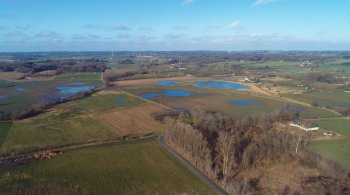Room for the Rhine branches
The aim of this case study is the creation of ecological flood retention by changing land use, reconnecting floodplains and change of sluice management in summer dikes. Floodplains are reconnected and side channels restored or their creation supported, with longitudinal main channel dams benefitting both shipping and nature.
This case study is one of 17 that are part of the EU Horizon2020 project MERLIN - Mainstreaming Ecological Restoration of freshwater-related ecosystems in a Landscape context: INnovation, upscaling and transformation.










